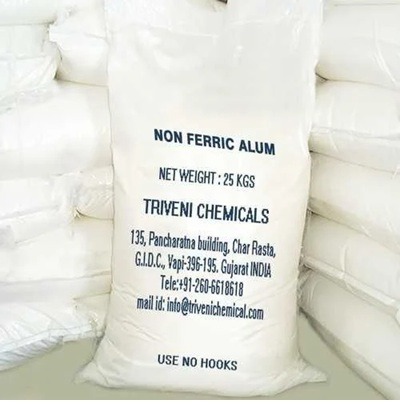Alum – aluminium sulphate
Alum Works in Water Treatment:
Coagulation and Flocculation:
Alum is added to the water, and its positively charged ions neutralize the negative charges of suspended particles, like clay, silt, and organic matter. This neutralization allows the particles to come closer together and form larger, clumped masses called flocs.
Sedimentation:
The larger flocs are heavier than the individual particles and settle to the bottom of the water container due to gravity. This process is known as sedimentation.
Filtration:
The water is then passed through filters to remove any remaining suspended particles or flocs that did not settle out. This process further clarifies the water and improves its overall quality.
Removal of Impurities:
By removing suspended particles, alum helps to reduce turbidity (cloudiness) and remove organic matter, including microorganisms and some inorganic chemicals. This reduction in organic matter also helps to minimize the formation of disinfection byproducts when chlorine is used later in the process.
Applications:
Drinking Water Treatment:
Alum is a crucial component in municipal water treatment plants to produce safe and clean drinking water.
Wastewater Treatment:
It is also used in wastewater treatment plants to remove pollutants, organic matter, and suspended solids from wastewater before it is discharged or reused.
Industrial Processes:
Alum finds applications in various industries such as mining, paper and pulp, and metal finishing, where it helps to clarify water or remove impurities


